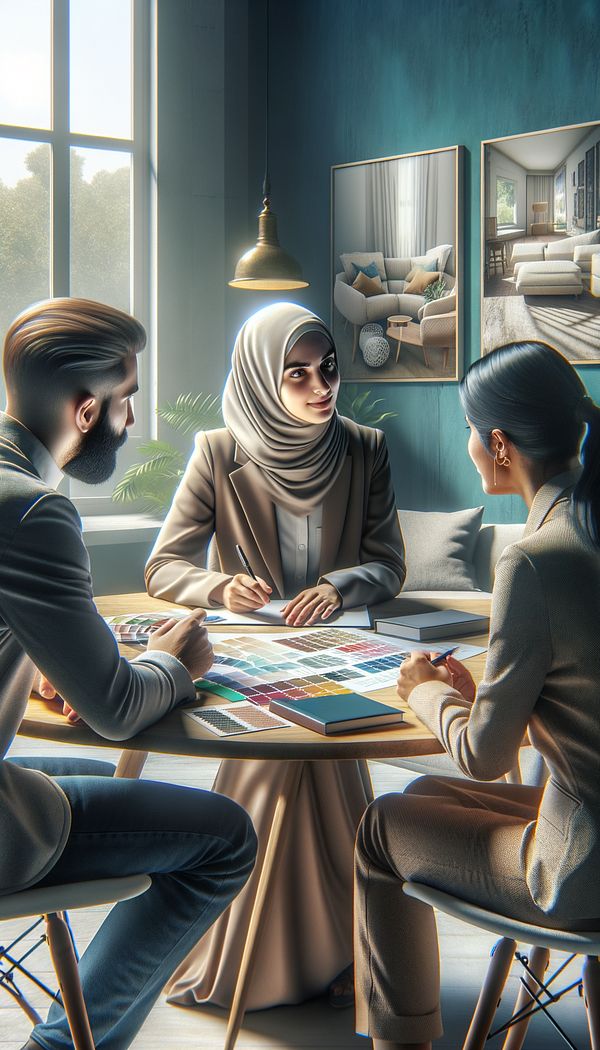What is a Consultation?
A meeting or series of meetings between a client and a professional to discuss plans, preferences, and requirements for an interior design project.
Description
Consultation is a crucial step in the interior design process, providing a foundation for the design project. It typically involves a meeting or series of meetings between the client and the interior designer. During these consultations, the client's design preferences, functional requirements, and budget are discussed in detail. This initial dialogue helps to align expectations and sets the stage for the design work to come.
The consultations may cover a wide range of topics, including the desired design styles, color and patterns, space planning and layout, and the selection of furniture types, lighting, and decorative objects. These meetings are invaluable for gathering the information necessary to develop a personalized design solution that meets the client’s needs and aesthetic preferences.
In addition to helping guide the overall project direction, consultations provide an opportunity for the designer to educate the client about various architectural elements, materials, sustainability and eco friendly design options, and the feasibility of certain design choices. This exchange not only informs the client but also fosters a collaborative relationship between the client and the designer, ensuring that the final design reflects the client's vision and is both functional and aesthetically pleasing.
Usage
For instance, before redesigning a living room, an interior designer might hold a consultation with the homeowner to understand their style preferences, discuss potential furniture arrangements, and review material samples for sofas and curtains. Similarly, in commercial projects, consultations could be used to determine the business needs, brand identity, and functional requirements of a space.
FAQs
-
How long does a typical consultation last?
A typical consultation can last anywhere from one to two hours, depending on the complexity of the project and the topics discussed.
-
Is there a fee associated with consultations?
Fees for consultations can vary. Some designers offer free initial consultations, while others may charge a flat fee or an hourly rate.
-
Can consultations be conducted virtually?
Yes, with advancements in technology, many designers offer the option for virtual consultations through video conferencing, allowing for flexibility and convenience.
-
What should I prepare for a consultation?
It's helpful to have a clear idea of your design preferences, budget, and any specific requirements or challenges of the space. Gathering inspiration images and floor plans can also be beneficial.
-
What happens after a consultation?
After a consultation, the designer typically provides a proposal outlining the project scope, estimated timelines, and costs. This can lead to a formal agreement and the start of the design phase.
Practical Application
To make the most out of a consultation, come prepared with specific goals, questions, and any inspiring visuals that reflect your taste. Being open about your budget and practical needs will also help the designer propose realistic, tailored solutions. Taking notes during the meeting can be useful for reference and ensuring all your concerns are addressed.
-
Design Styles478 articles
-
Furniture Types599 articles
-
Lighting111 articles
-
Decorative Objects240 articles
-
Space Planning & Layout134 articles
-
Color & Patterns154 articles
-
ApronAn apron is a decorative or structural panel fixed beneath a surface such as a tabletop, window ledge, or countertop.
-
Built-inBuilt-in refers to any feature or piece of furniture that is permanently integrated into a room's structure.
-
ChandelierA chandelier is a decorative ceiling-mounted light fixture.
-
PressboardPressboard is a type of engineered wood product made from wood fibers bonded together under heat and pressure.
-
Pillow Top MattressA pillow top mattress is a mattress that features an additional upholstery layer sewn on top for extra comfort.
